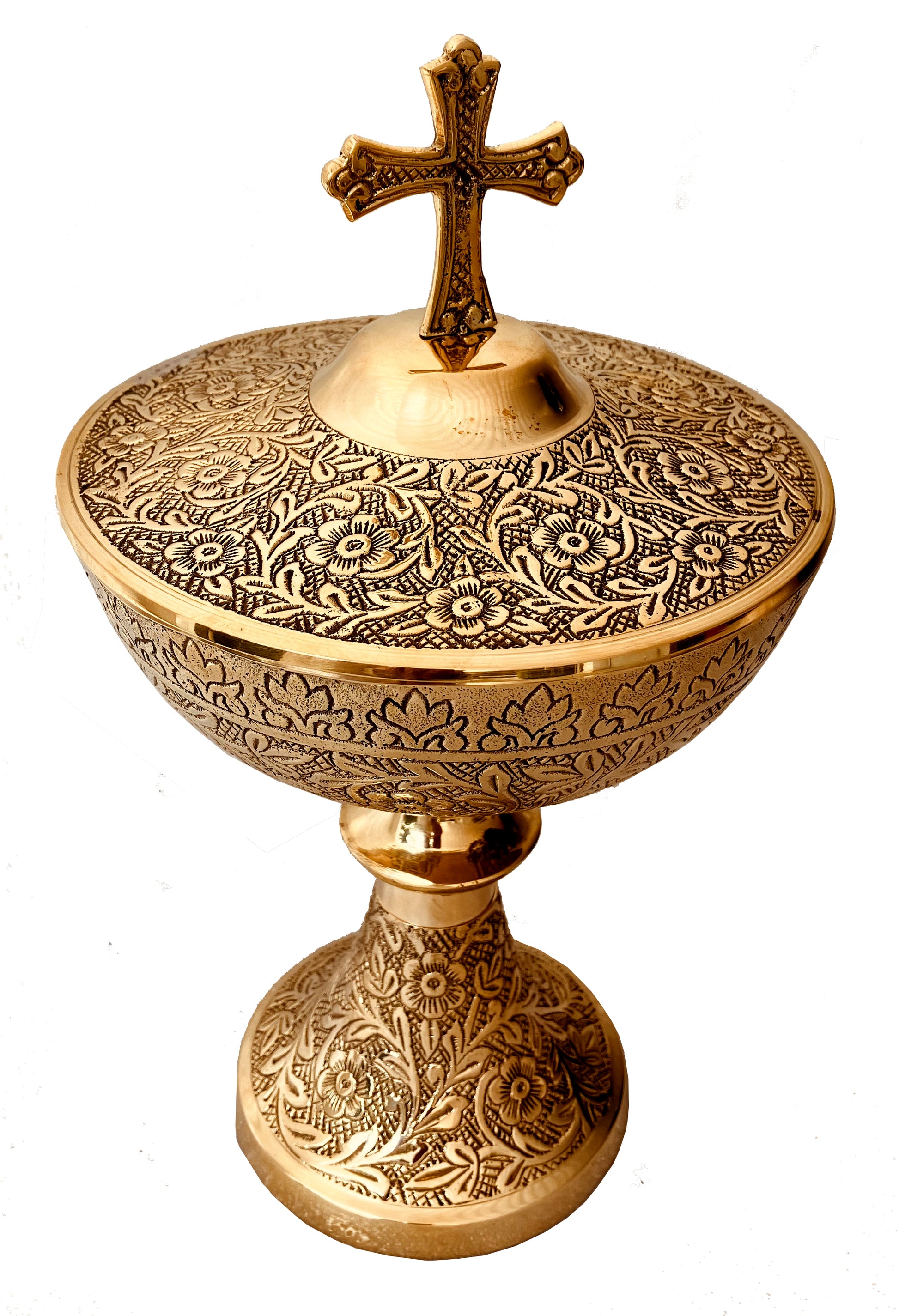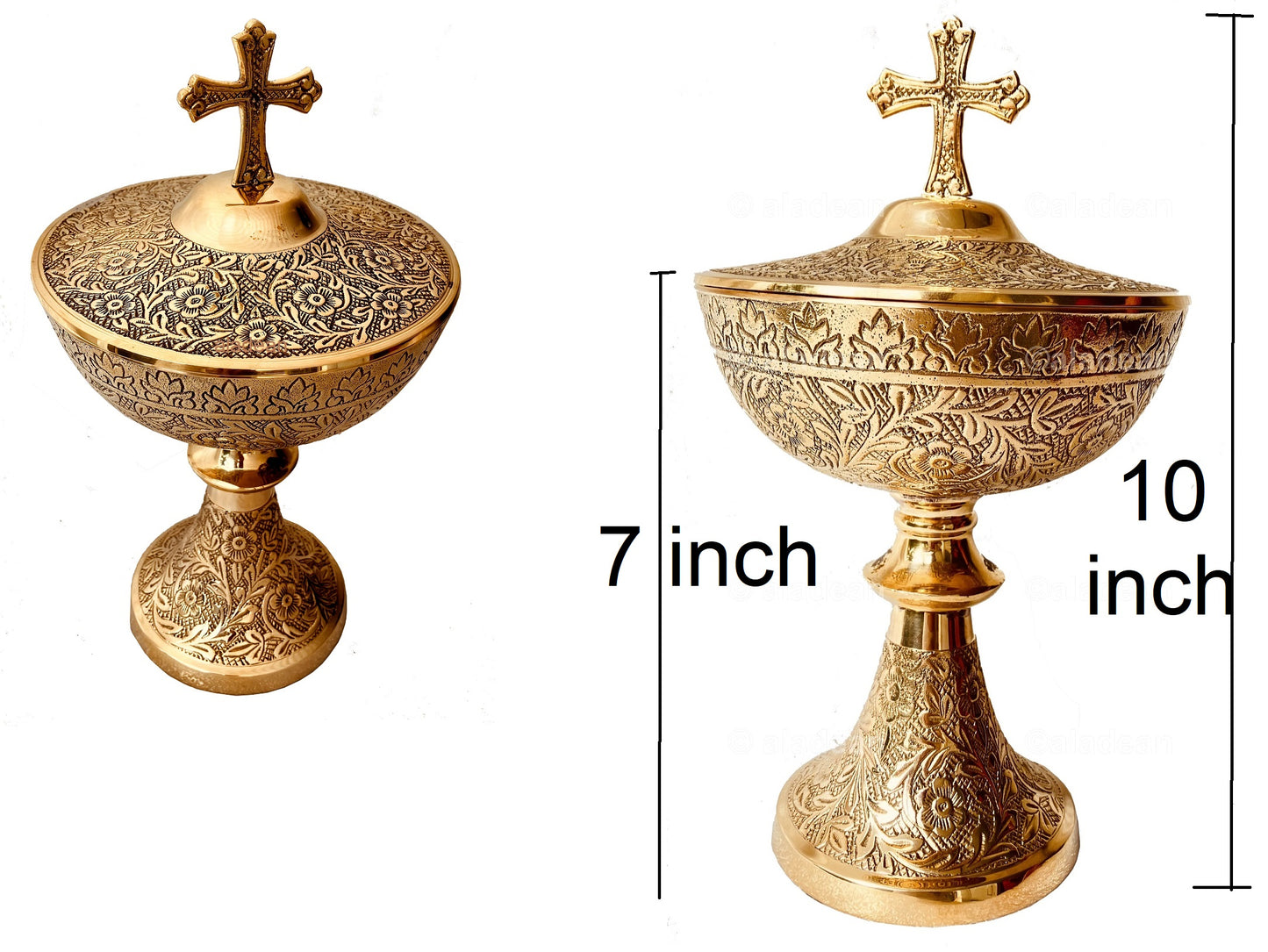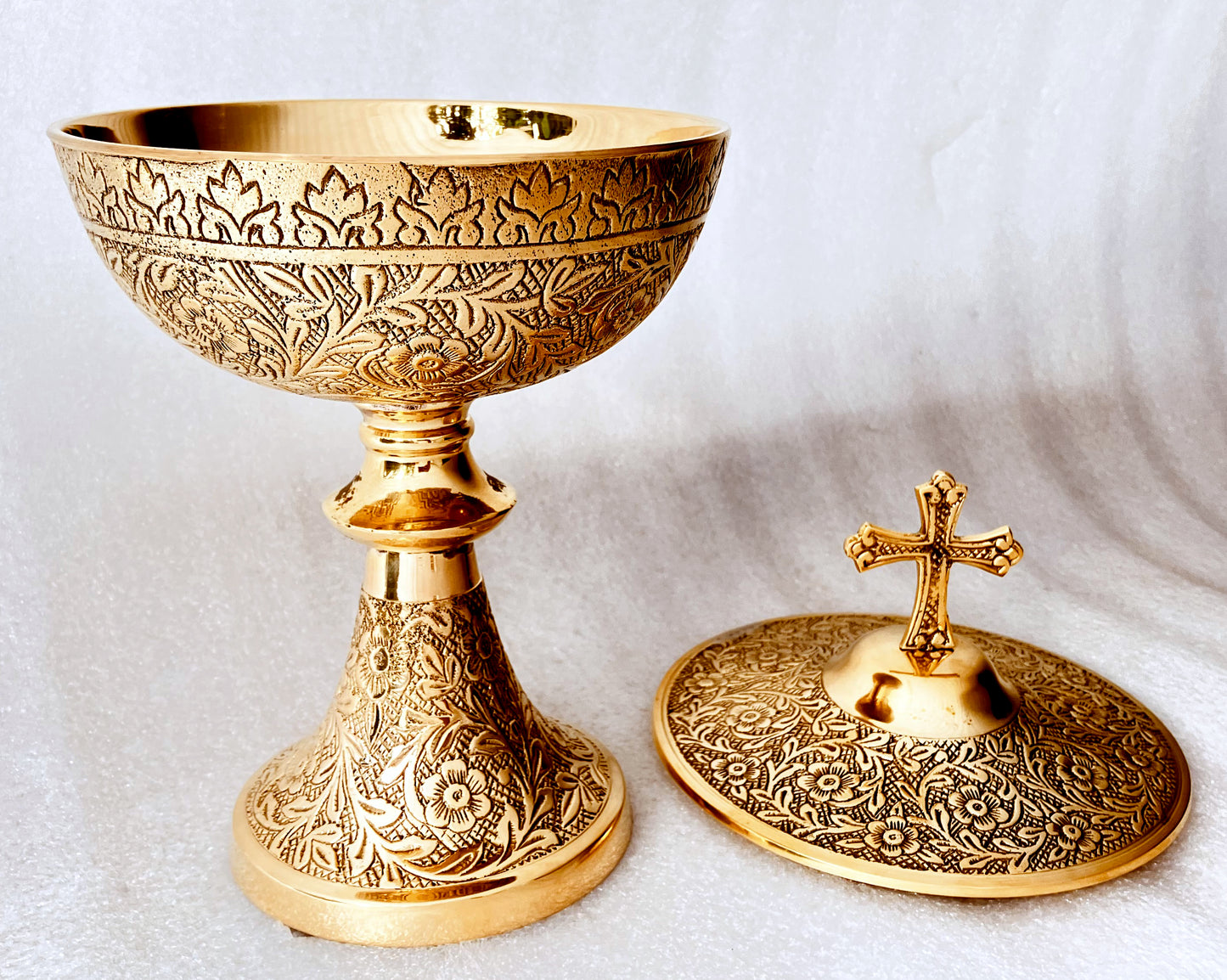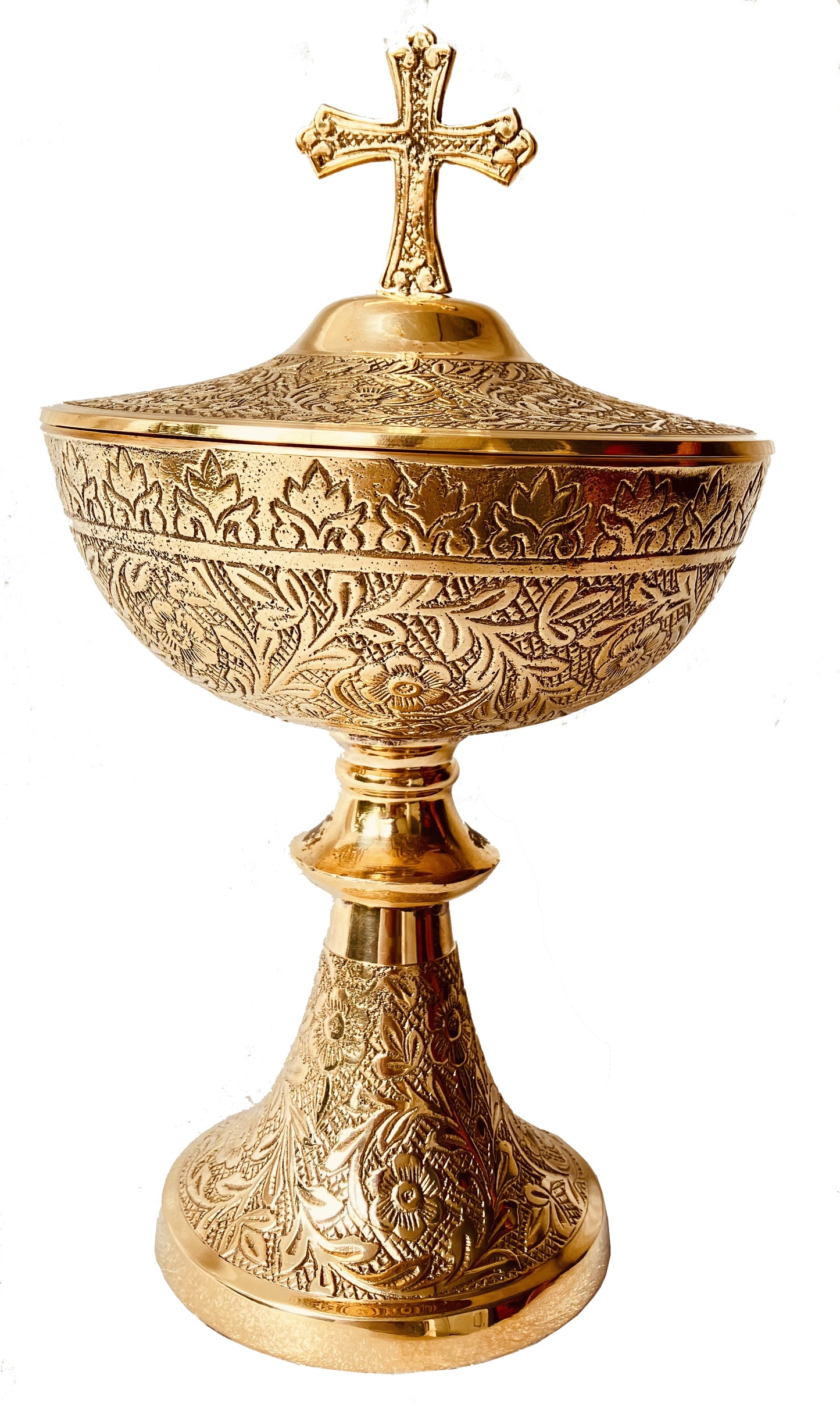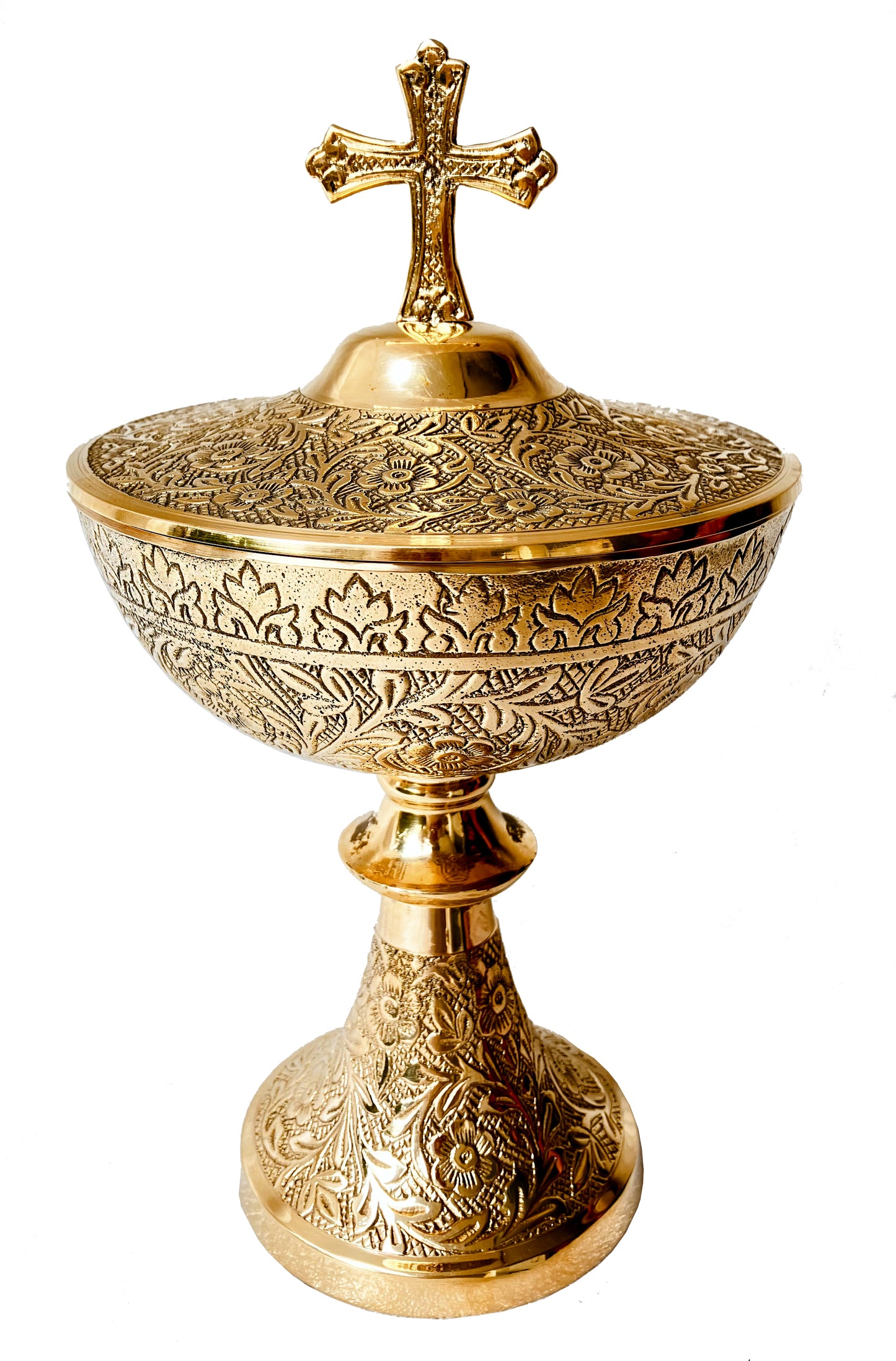The Rosary in Catholic Christianity: A Detailed Guide
Share
Introduction
The rosary is one of the most distinctive and cherished devotions in Catholic Christianity. It is a powerful tool for prayer and meditation, used by Catholics around the world to draw closer to God and to reflect on the life of Jesus Christ and the Virgin Mary. This article provides an in-depth exploration of the rosary, including its use, types, significance, prayers, and the most beneficial words of recitation. By the end, readers will have a comprehensive understanding of the rosary's role in Catholic spirituality.
History and Origins of the Rosary
The rosary, as we know it today, has a rich history that dates back to the early centuries of Christianity. While the exact origins are difficult to pinpoint, the practice of repetitive prayer and meditation using beads can be traced to several early Christian traditions.
Early Christian Roots
The use of prayer beads is believed to have been influenced by similar practices in other religious traditions, such as Hinduism and Buddhism. Early Christians adopted the use of prayer beads to keep track of prayers, particularly the 150 Psalms. This practice evolved over time into the recitation of the "Our Father" (Pater Noster) prayer.
Development of the Marian Rosary
The development of the Marian rosary, which focuses on the life of Christ and the Virgin Mary, is traditionally attributed to St. Dominic in the 13th century. According to legend, the Virgin Mary appeared to St. Dominic and instructed him to promote the rosary as a means of combating heresy and fostering spiritual growth.
Standardization of the Rosary
The structure of the rosary as we know it today was standardized in the 16th century by Pope Pius V. He established the set of prayers and mysteries that form the core of the rosary devotion. The rosary gained widespread popularity and became an integral part of Catholic spirituality.
Structure and Components of the Rosary
The rosary consists of a set of beads arranged in a specific pattern, with each bead representing a prayer. The traditional rosary has five decades, with each decade consisting of one "Our Father," ten "Hail Marys," and one "Glory Be." Additionally, the rosary includes introductory prayers and concluding prayers.
The Crucifix and Initial Prayers
The rosary begins with the crucifix, where the Apostles' Creed is recited. This is followed by one "Our Father," three "Hail Marys," and one "Glory Be" on the introductory beads.
The Decades
Each of the five decades consists of one large bead and ten smaller beads. On the large bead, the "Our Father" is recited, followed by ten "Hail Marys" on the smaller beads. Each decade concludes with the "Glory Be" and, in some traditions, the "Fatima Prayer."
The Mysteries of the Rosary
The rosary is divided into four sets of mysteries, each focusing on different aspects of the lives of Jesus and Mary. These mysteries are meditated upon during the recitation of each decade.
-
The Joyful Mysteries (Mondays and Saturdays)
- The Annunciation
- The Visitation
- The Nativity
- The Presentation
- The Finding of Jesus in the Temple
-
The Sorrowful Mysteries (Tuesdays and Fridays)
- The Agony in the Garden
- The Scourging at the Pillar
- The Crowning with Thorns
- The Carrying of the Cross
- The Crucifixion
-
The Glorious Mysteries (Wednesdays and Sundays)
- The Resurrection
- The Ascension
- The Descent of the Holy Spirit
- The Assumption of Mary
- The Coronation of Mary
-
The Luminous Mysteries (Thursdays) – Introduced by Pope John Paul II in 2002
- The Baptism of Jesus
- The Wedding at Cana
- The Proclamation of the Kingdom
- The Transfiguration
- The Institution of the Eucharist
Different Types of Rosaries
While the traditional five-decade rosary is the most common, there are several variations that cater to different devotional practices and preferences.
One-Decade Rosary (Chaplet)
This shorter rosary, also known as a chaplet, consists of one decade (ten "Hail Marys") and is often used for quick, focused prayer sessions. Chaplets can also be dedicated to specific saints or intentions.
Franciscan Crown Rosary
The Franciscan Crown Rosary, also known as the Seraphic Rosary, consists of seven decades. Each decade commemorates a joyful event in the life of the Virgin Mary, starting with the Annunciation and ending with the Assumption.
Seven Sorrows Rosary
This rosary, also known as the Servite Rosary, focuses on the seven sorrows of Mary. It consists of seven groups of seven beads, with each group meditating on a specific sorrow, such as the prophecy of Simeon and the crucifixion of Jesus.
Rosary Bracelets and Rings
For convenience and portability, rosary bracelets and rings have been developed. These items typically have a single decade or ten small notches to help keep track of prayers.
The Significance of the Rosary in Catholicism
The rosary holds profound significance in Catholic spirituality, serving as a powerful tool for prayer, meditation, and contemplation. Its importance is rooted in its ability to deepen one's relationship with God and foster spiritual growth.
Meditative Prayer
The repetitive nature of the rosary allows for deep meditation on the mysteries of Christ's life. As each bead is fingered and each prayer recited, the mind is free to contemplate the events of the mysteries, fostering a deeper understanding and connection to the divine.
Scriptural Reflection
The mysteries of the rosary are deeply rooted in Scripture, providing a structured way to reflect on key events in the life of Jesus and Mary. This scriptural foundation helps Catholics internalize the teachings of the Bible and apply them to their lives.
Spiritual Strength and Protection
Many Catholics believe that the rosary provides spiritual strength and protection against evil. It is often prayed for specific intentions, such as healing, guidance, and intercession. The rosary is also considered a powerful weapon against temptation and sin.
Communal and Personal Prayer
The rosary can be prayed individually or in a group, making it a versatile devotion for both personal and communal prayer. Rosary groups and prayer circles are common in many parishes, fostering a sense of community and shared faith.
Prayers of the Rosary
The rosary consists of several prayers, each with its own significance and purpose. These prayers are recited in a specific order, creating a rhythm that guides the devotee through the meditation on the mysteries.
Apostles' Creed
The rosary begins with the Apostles' Creed, a statement of faith that summarizes the core beliefs of Christianity. It is a declaration of one's commitment to the teachings of the Church.
"I believe in God, the Father Almighty, Creator of heaven and earth, and in Jesus Christ, His only Son, our Lord, who was conceived by the Holy Spirit, born of the Virgin Mary, suffered under Pontius Pilate, was crucified, died and was buried; He descended into hell; on the third day He rose again from the dead; He ascended into heaven, and is seated at the right hand of God the Father Almighty; from there He will come to judge the living and the dead. I believe in the Holy Spirit, the holy catholic Church, the communion of saints, the forgiveness of sins, the resurrection of the body, and life everlasting. Amen."
Our Father (Pater Noster)
The "Our Father," also known as the Lord's Prayer, is recited on the large beads at the beginning of each decade. This prayer, taught by Jesus to his disciples, is a universal prayer of praise, petition, and submission to God's will.
"Our Father, who art in heaven, hallowed be Thy name; Thy kingdom come; Thy will be done on earth as it is in heaven. Give us this day our daily bread; and forgive us our trespasses, as we forgive those who trespass against us; and lead us not into temptation, but deliver us from evil. Amen."
Hail Mary (Ave Maria)
The "Hail Mary" is recited on each of the ten small beads in a decade. This prayer honors Mary and asks for her intercession. It is a blend of scriptural references and traditional petition.
"Hail Mary, full of grace, the Lord is with thee; blessed art thou among women, and blessed is the fruit of thy womb, Jesus. Holy Mary, Mother of God, pray for us sinners, now and at the hour of our death. Amen."
Glory Be (Doxology)
The "Glory Be" is a short hymn of praise to the Holy Trinity, recited at the end of each decade. It acknowledges the eternal glory and majesty of God.
"Glory be to the Father, and to the Son, and to the Holy Spirit, as it was in the beginning, is now, and ever shall be, world without end. Amen."
Fatima Prayer
The Fatima Prayer, also known as the "O My Jesus" prayer, is often added after the "Glory Be" at the end of each decade. It was introduced following the apparitions of the Virgin Mary to three shepherd children in Fatima, Portugal, in 1917.
"O my Jesus, forgive us our sins, save us from the fires of hell, lead all souls to heaven, especially those in most need of Thy mercy. Amen."
Famous and Beneficial Recitations on the Rosary
The prayers of the rosary are powerful in their simplicity and depth. Over centuries, many saints and theologians have highlighted specific words and phrases that are particularly beneficial for spiritual growth and protection.
The Name of Jesus
The name of Jesus is central to the rosary, particularly in the "Hail Mary" prayer. Reverently pronouncing the name of Jesus is believed to invoke his presence and power.
Marian Titles
Honoring Mary with titles such as "full of grace" and "Mother of God" reflects her unique role in salvation history. These titles are drawn from Scripture and tradition, acknowledging her purity and intercessory power.
Petitions for Mercy and Protection
The Fatima Prayer's plea for forgiveness and deliverance from hell underscores the rosary's role in seeking God's mercy and protection. This prayer is a heartfelt petition for the salvation of souls.
Expressions of Faith and Praise
The Apostles' Creed and "Glory Be" are expressions of faith and praise that frame the rosary with a declaration of belief and adoration of the Holy Trinity. They remind the devotee of the foundational truths of Christianity.
How to Pray the Rosary
Praying the rosary involves a series of steps that guide the devotee through the prayers and meditations. Here is a detailed guide on how to pray the rosary:
-
Begin with the Sign of the Cross
- Make the Sign of the Cross while holding the crucifix.
-
Recite the Apostles' Creed
- On the crucifix, recite the Apostles' Creed.
-
Recite the Our Father
- On the first large bead, recite the "Our Father."
-
Recite Three Hail Marys
- On the next three small beads, recite one "Hail Mary" on each bead, offering them for an increase in faith, hope, and charity.
-
Recite the Glory Be
- On the next large bead, recite the "Glory Be."
-
Announce the First Mystery
- Announce the first mystery of the set being prayed (e.g., the first Joyful Mystery).
-
Recite the Our Father
- On the large bead, recite the "Our Father."
-
Recite Ten Hail Marys
- On the ten small beads of the first decade, recite one "Hail Mary" on each bead, meditating on the mystery.
-
Recite the Glory Be and Fatima Prayer
- After the ten Hail Marys, recite the "Glory Be" and the Fatima Prayer (optional).
-
Repeat for Each Decade
- Continue this pattern for the remaining four decades, each time announcing the next mystery, reciting the "Our Father," ten "Hail Marys," "Glory Be," and the Fatima Prayer.
-
Concluding Prayers
- After the five decades, recite the "Hail Holy Queen" and the concluding prayer.
-
End with the Sign of the Cross
- End the rosary with the Sign of the Cross.
The Impact of the Rosary
The rosary has had a profound impact on the lives of countless individuals and communities. Its influence extends beyond personal spirituality to social and cultural dimensions.
Personal Transformation
Many Catholics testify to the transformative power of the rosary in their personal lives. It provides comfort, guidance, and a sense of peace. The repetitive prayers foster mindfulness and help individuals connect with the divine in their daily lives.
Community and Tradition
The rosary is often prayed in groups, fostering a sense of community and shared devotion. Rosary circles, processions, and public recitations are common in many Catholic communities, strengthening communal bonds and reinforcing tradition.
Cultural Significance
The rosary has cultural significance in many parts of the world. It is often incorporated into cultural expressions, such as art, music, and literature. The rosary's symbolism and imagery are deeply embedded in Catholic culture.
Social and Charitable Impact
Rosary groups and organizations often engage in charitable activities, reflecting the rosary's call to compassion and service. Many rosary groups support social justice initiatives, humanitarian aid, and community outreach programs.
Conclusion
The rosary is a powerful and beloved devotion in Catholic Christianity. Its structured prayers and meditations provide a pathway to deepen one's relationship with God and to reflect on the mysteries of Christ's life. Through its various forms and types, the rosary accommodates different devotional needs and preferences. Its significance extends beyond personal spirituality to encompass community, culture, and social impact. Whether prayed individually or in a group, the rosary remains a timeless and transformative practice that continues to inspire and guide Catholics around the world. Note - AI generated post, report errors if any for immediate correction.

